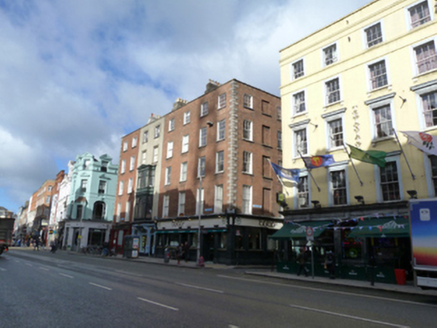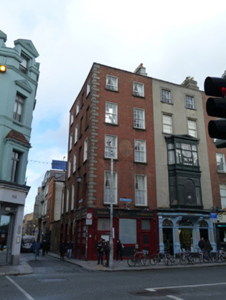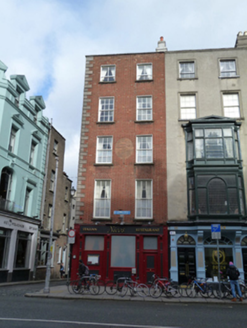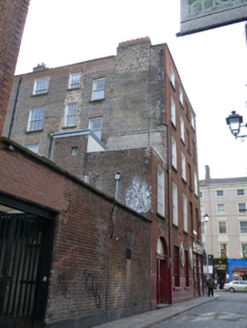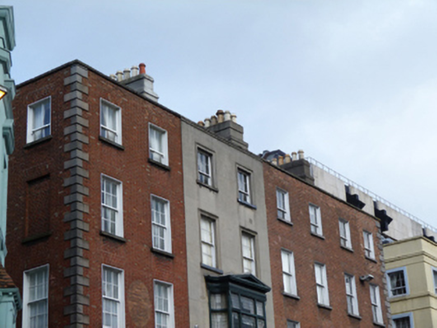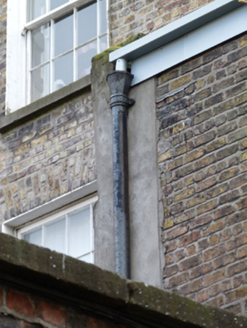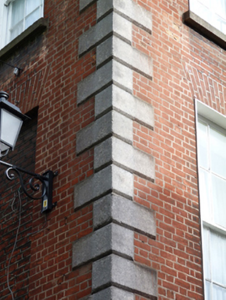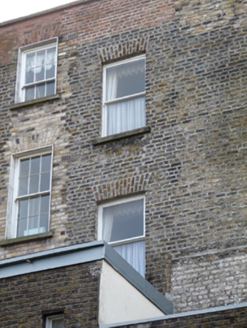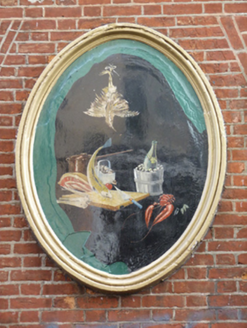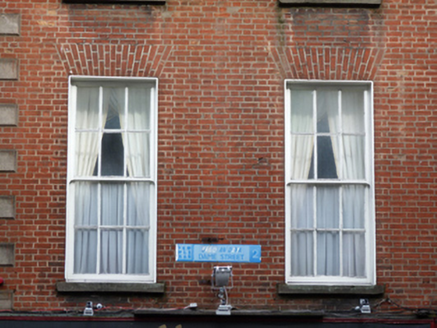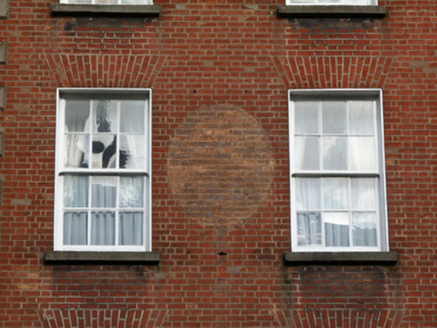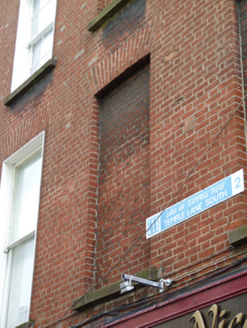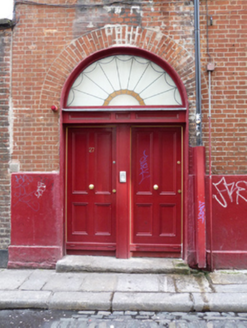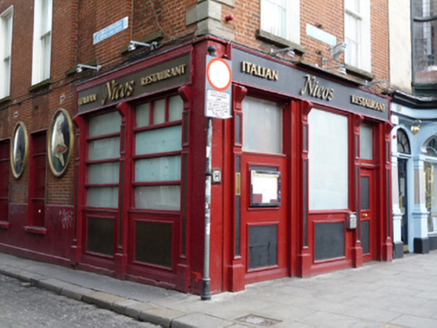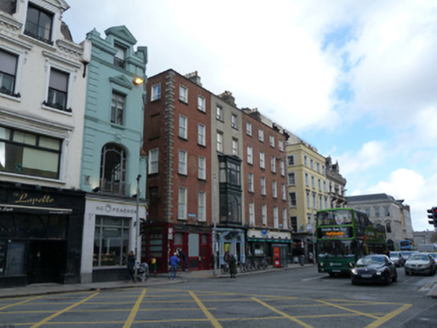Survey Data
Reg No
50020143
Rating
Regional
Categories of Special Interest
Architectural, Artistic, Historical, Social
Previous Name
Findlater and Co.
Original Use
House
In Use As
Restaurant
Date
1775 - 1795
Coordinates
315659, 234057
Date Recorded
24/02/2015
Date Updated
--/--/--
Description
Corner-sited terraced two-bay five-storey over basement former house, built c.1785, having wraparound shopfront to front (south) and west elevations, five-bay two- and five-storey elevation to west. Now in use as restaurant and flats. M-profile pitched roof, hipped to west, hidden behind red brick parapet with granite coping, rendered chimneystacks having clay pots and cast-iron rainwater goods. Red brick, laid in Flemish bond, to walls to front and west elevations, with granite quoins and oval plaques to west elevation. Yellow brick, laid in English garden wall bond, to wall to rear (north) elevation. Square-headed window openings having raised rendered reveals, granite sills and six-over-six pane, two-over-two pane and one-over-one pane timber sliding sash windows. Blind openings to west elevation, cast-iron rails to ground floor window openings. Round-headed door opening to west elevation with moulded masonry surround, granite step and replacement timber doors and fanlight. Recent shopfront comprising timber panelled pilasters, having fluted brackets supporting plain timber fascia, square-headed display window openings over timber risers, square-headed door opening with timber panelled door and plain glass overlight. Located to north side of Dame Street at intersection with Temple Lane South. Granite paving to front and west elevations.
Appraisal
This building is one of the finest examples of a Wide Street Commission building remaining on the north side of Dame Street and forms part of a relatively intact terrace located between Temple Lane South and Crow Street. Dame Street derives its name from a dam that powered a mill on the River Poddle. It was one of the principal streets of the city by the eighteenth century, leading from the Parliament House (now Bank of Ireland College Green) to the Castle. The street was widened and remodelled by Samuel Sproule and Charles Tarrant of the Wide Street Commissioners in the late eighteenth century. Individual landowners were responsible for constructing new houses, while the Commission financed the additions of cut stone embellishments including the granite quoins evident on this building. As commercial buildings and financial institutions were introduced to the street in the late nineteenth and early twentieth centuries many of the structures were rebuilt or remodelled.
